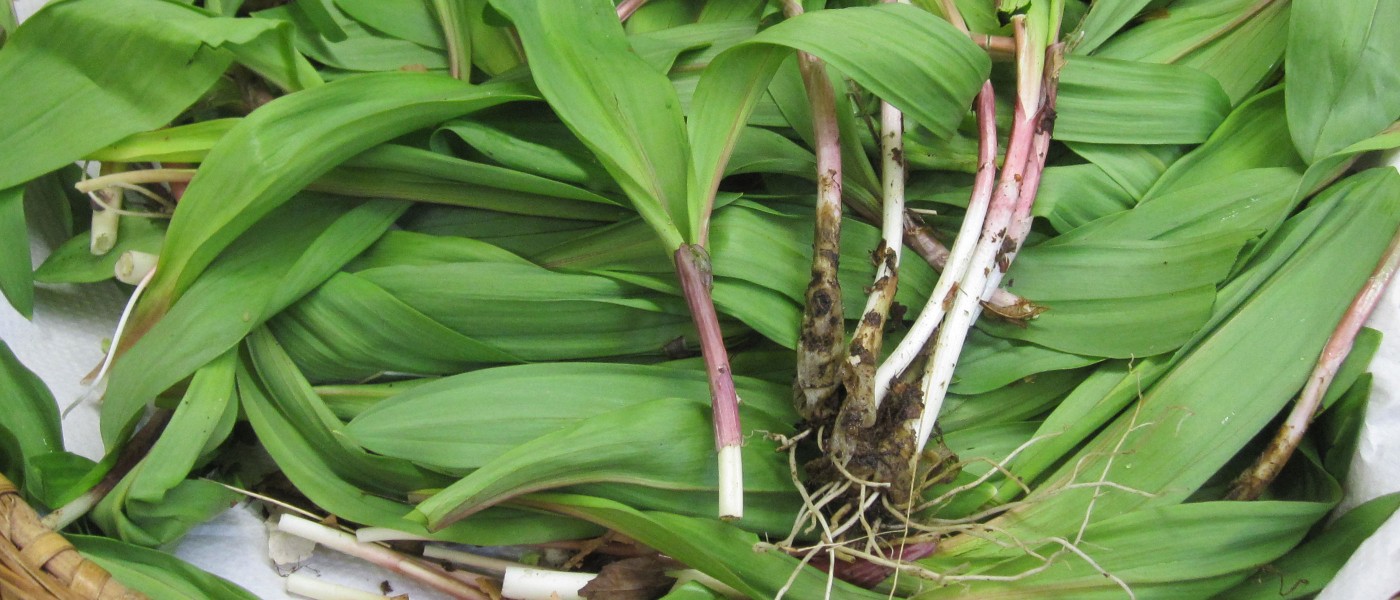Foraging for Wild Ramps
It’s peak ramp-picking time in the neck of the Catskills where I spend my weekends, and my neighbor, a logger, recently took us to his favorite spot for our annual foraging session. Ramps (Allium tricoccum), also called wild leeks, grow on damp slopes in deciduous woods before spring leaf-out, which perfectly describes the western Catskills in April. Green plants are still scarce there this time of year, so patches of this spring ephemeral are easy to spot among the deep leaf litter and fallen logs of the woodland floor.
The rampant popularity of wild leeks among foodies in recent years has brought concern about over-harvesting in some regions. For this reason, we pick only the leaves and stems and leave the small white bulbs in the ground to grow again for another year. The broad, lily-like leaves are wonderful sautéed with a little olive oil or butter and salt and pepper, tossed in with scrambled eggs, or as a pizza topping.
As demand at farmers’ markets and fancy restaurants for this sweet, delicate, garlicky-tasting green has grown, a few native plant purveyors, such as Prairie Moon Nursery, have begun offering seeds and bulb sets for sale. By most accounts the plant is a finicky germinator, which is probably why it has not been cultivated commercially. North Carolina State University has been researching ways to produce ramps efficiently and sustainably and offers a very thorough online information sheet about growing wild leeks. Like trillium, bloodroot, and other woodland ephemerals, ramps require rich, consistently moist but well-draining soil high in organic matter. Site them in a spot that gets dappled sunlight in the spring and full shade in warmer months. You may have to wait for up to three years for harvestable ramps, but they’re worth it! In the meantime, keep an eye out for them in farmers’ markets—or in your own neck of the woods.
Read More > Eat Local: Spring Pasta with Ramp and Parsley Pesto<


